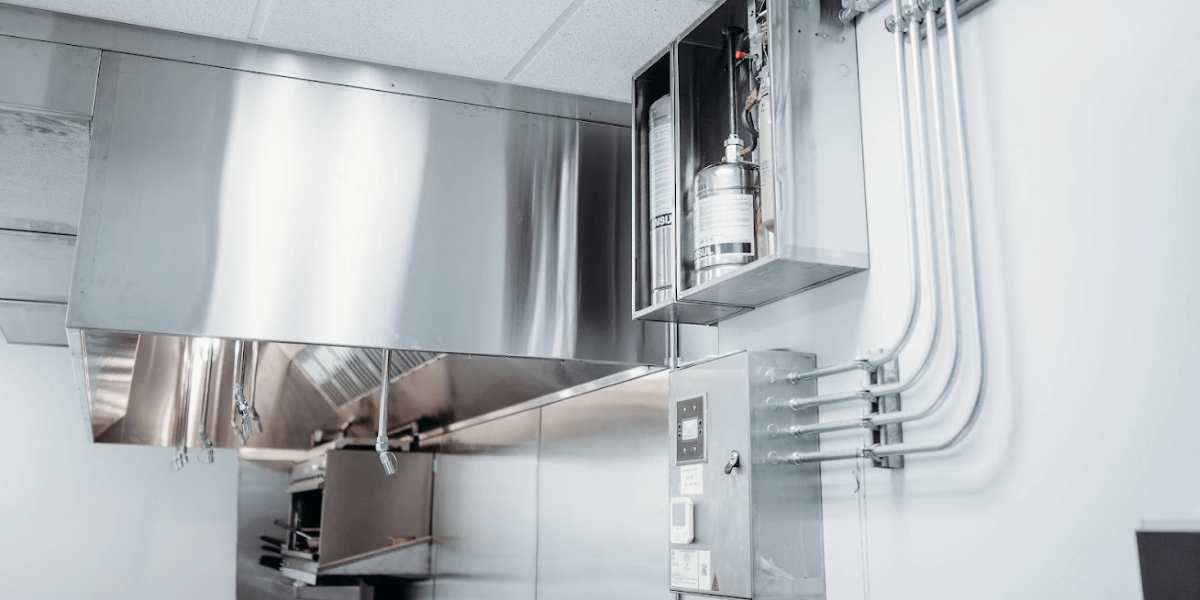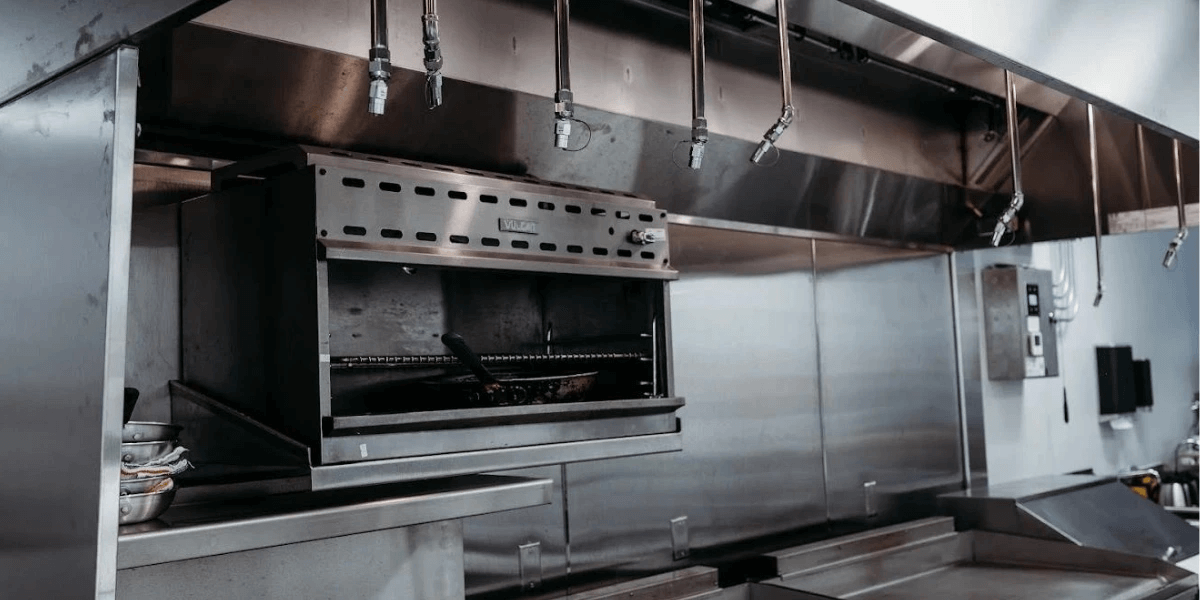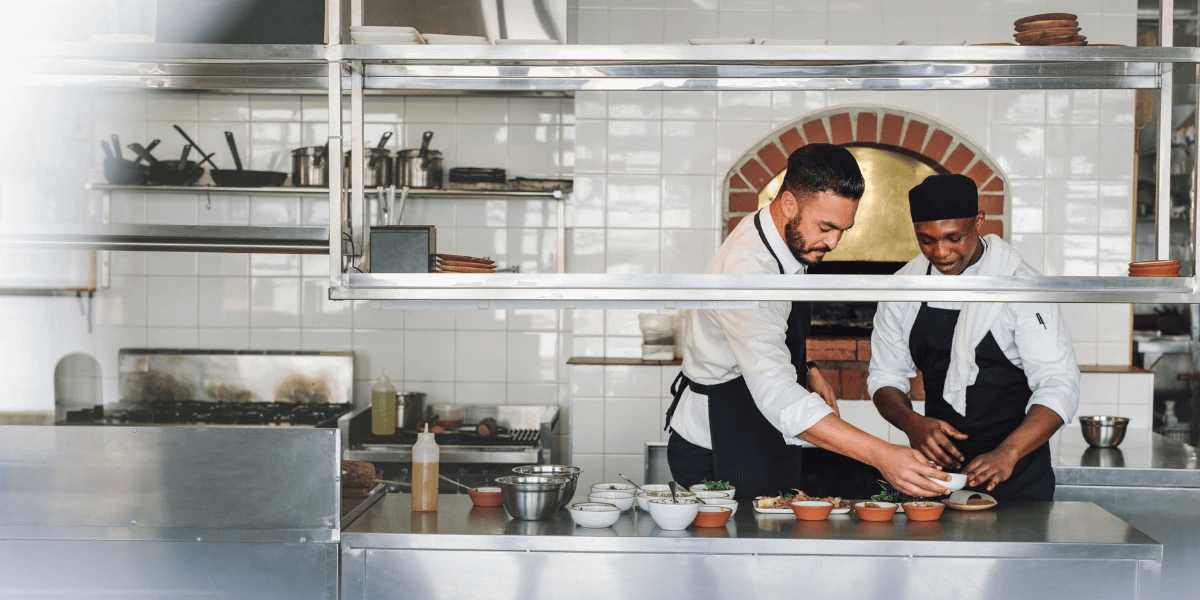Suppression System for Kitchen Safety | State College, PA
Imagine your restaurant or commercial kitchen humming with activity, where every sizzle and pop is a pleasant sound and a sign of culinary creativity happening. However, in this busy environment, the risk of potential fire is also lurking. The only thing standing in its way? A suppression system for kitchen safety.
All kitchens, with their unique risks and requirements, need professional fire systems tailored just for them. So, how exactly are these systems so crucial? Let's get into the heart of kitchen safety and uncover the reasons.
Key Takeaways
- Fire suppression systems are essential in commercial kitchens to detect and extinguish fires swiftly, preventing potential disasters and ensuring continuous kitchen operations.
- Various fire suppression systems, including wet chemical, CO2, and dry chemical systems, offer tailored solutions to meet different kitchen environments' unique fire safety needs.
- Selecting the right fire suppression system and a trusted provider like Swartz Fire & Safety ensures compliance with safety regulations and the protection of lives, property, and business continuity.
Let's Understand Fire Suppression Systems

Fire suppression systems in commercial kitchens are specialized setups designed to detect and extinguish fires before they can spread. Unlike traditional fire extinguishers that require manual activation, these systems automatically spring into action, precisely targeting the heart of the fire.
They play a pivotal role in commercial kitchens by providing a safety net against the dual threats of flames and heat.
There are many kinds of fire systems, so we'll also talk about each one.
Types of Fire Suppression Systems
The culinary world benefits from a variety of fire suppression systems, each uniquely suited to the kitchen environment:
- Wet chemical systems: These are the most common in commercial kitchens. They discharge a wet chemical agent that quickly smothers the fire, preventing re-ignition by cooling the affected area and creating a barrier between the fuel and oxygen.
- CO2 systems: Ideal for electrical fires, CO2 extinguishers work by displacing oxygen, effectively suffocating the fire. They're particularly useful in kitchens with a lot of electrical cooking appliances but are less effective on grease fires common in commercial settings.
- Dry chemical systems: Versatile and effective, dry chemical systems can tackle a variety of fires, including grease and electrical fires. They interrupt the chemical reaction of the fire, extinguishing flames quickly.
- Foam systems: Foam fire suppression systems are effective in smothering large surface fires, making them ideal for incidents involving liquids and greases. By forming a blanket over the fire, they cut off the oxygen supply and prevent the fire from spreading.
- Water systems: Water mist systems offer a safer alternative for environments with a mix of fire risks. They use fine water sprays to cool the flames and reduce the oxygen level, minimizing water damage and electrical risks.
Additionally, while fire extinguishers play a crucial role in initial fire response, the automatic nature of suppression systems provides an essential layer of safety, especially in environments where the risk of kitchen fires is high.
From the rapid response of wet chemical systems to the electricity-safe action of CO2 extinguishers, the right fire suppression solution can mean the difference between a minor incident and a catastrophic event.
The Anatomy of a Kitchen Suppression System
Let's peel back the layers and examine the key components and operational workings of these systems to understand them better.
Key components
A kitchen suppression system is a carefully orchestrated assembly designed to act fast and effectively in the event of a fire. Central to this system are several key components:
- Hood: Positioned directly above the cooking area, the hood acts as the first line of defense by housing the nozzles that release the extinguishing agents.
- Gas line connection: Integral to the system's ability to cut off the fuel source to a fire, the gas line connection ensures that in the event of a fire, the gas flow can be immediately stopped by removing one of the fire's essential elements.
- Detection mechanism: Whether it's a thermal sensor or a smoke detector, the detection mechanism is finely tuned to recognize the early signs of a fire by triggering the system into action without a moment's delay.
- Discharge nozzles: Strategically placed above high-risk areas, these nozzles are designed to distribute the extinguishing agent evenly so that the fire is quickly suppressed.
- Manual pull station: The manual pull station is a critical feature that allows human intervention and provides an additional layer of safety, enabling staff to activate the system manually if needed.
- Control panel: The brain of the operation, this component coordinates the system's response, from detection to suppression, ensuring efficient and effective action.
Where Are Systems Required?

Virtually every kind of commercial kitchen, regardless of its size or the nature of its operations, falls under the umbrella of environments that require a fire suppression system. This mandate is a requirement backed by legal and safety standards aimed at protecting not only physical premises but, more importantly, the lives of those who work and dine within its walls.
- Commercial kitchens: From bustling restaurants and hotels to hospitals and educational institutions, any setting that prepares food on a commercial scale must have a kitchen fire suppression system installed.
- Industrial cooking facilities: Large-scale food production facilities, including factories and catering companies, also fall into this category, given the high-volume cooking and the associated risks.
- Mobile cooking operations: Food trucks and temporary cooking setups, often overlooked, are equally at risk and are required by many jurisdictions to have portable fire suppression systems in place.
The requirement for a fire suppression system extends beyond just the presence of cooking equipment. Legal and safety standards, including those outlined by the National Fire Protection Association (NFPA), dictate the specifics of these requirements, taking into account the type of cooking, the equipment used, and the layout of the kitchen.
How to Choose the Right System

Selecting the appropriate fire suppression system is a task that requires careful consideration of several factors, all of which contribute to the overall safety and functionality of your kitchen:
- Kitchen size and layout: The physical dimensions of the kitchen and the arrangement of cooking equipment play a significant role in determining the type and scale of the system needed.
- Type of cooking equipment: The variety of cooking equipment, from deep fryers to griddles, each presents unique fire risks that the suppression system must be capable of addressing.
- Specific risks: Every kitchen has its specific set of risks, whether it's the volume of cooking, the type of food being prepared, or the cooking methods employed. These risks must be carefully evaluated to choose a system that can effectively mitigate them.
- Legal and safety compliance: Adherence to local fire codes and standards is non-negotiable. Consulting with a fire safety expert or a certified technician can provide invaluable guidance in selecting a system that not only meets but exceeds these requirements.
- Professional installation and maintenance: Installation of a fire suppression system is a job for professionals. Certified technicians ensure that the system is not only installed correctly but also maintained in accordance with the manufacturer’s guidelines and legal standards.
Choosing a Partner for Protection
Selecting the right ally for your kitchen’s fire safety is about finding a partner who brings expertise, certification, and comprehensive support services to the table. A partner who not only understands the complexities of fire suppression systems but also prioritizes your specific needs so that your kitchen operates safely and in compliance with all relevant regulations.
Selecting a provider
The search for a fire safety company should be meticulous, focusing on a few key areas that signify their capability and reliability:
- Expertise and experience: Look for a company with a robust track record in the industry, one that has successfully installed and maintained kitchen suppression systems across a variety of settings. Their experience speaks volumes about their ability to handle the unique challenges your kitchen might present.
- Certification and training: Certification is a non-negotiable. A reputable fire safety company should have technicians who are not only certified but also undergo continuous training to stay abreast of the latest technologies and safety standards in fire suppression.
- Support services: The relationship with your fire safety provider shouldn’t end after installation. Seek out a company that offers comprehensive support services, including regular maintenance, inspections, and emergency response capabilities. Their commitment to ongoing support is a testament to their dedication to your safety and satisfaction.
Ready to Upgrade Your Kitchen Safety?
Is your kitchen ready for a safety transformation? Don't wait for a fire emergency to reveal gaps in your security and protection plan. Swartz Fire & Safety is here to ensure your kitchen is equipped with the latest and most efficient fire suppression technology.
With us, you're choosing a partner committed to excellence, offering specially designed suppression systems, expert maintenance, and unbeatable customer service.
Ensure your kitchen is protected against heat, fire, and potential injuries with the leading name in fire safety. Contact us today for a comprehensive consultation or service inquiry. Let us help you take the next step towards a safer, more secure kitchen environment!
Frequently Asked Questions
What type of suppression system is used in kitchen hoods?
Kitchen hoods typically utilize wet chemical suppression systems, specifically designed to extinguish fires caused by cooking oils and fats by quickly smothering the flames and preventing re-ignition.
Do I need a fire suppression system in my kitchen?
Yes, any commercial or industrial kitchen requires a fire suppression system to ensure safety, meet legal and safety standards, and protect against the high risks of fires associated with cooking equipment. But you should also think about getting one for your residential kitchen.
What is a kitchen fire suppression system discharge?
A kitchen fire suppression system discharge refers to the release of extinguishing agents (such as wet chemicals, CO2, or foam) from the system's nozzles to quickly put out a fire detected in the kitchen area.
What triggers a kitchen fire suppression system?
Kitchen fire suppression systems are typically triggered automatically by the detection of excessive heat or flames. Some systems also include a manual pull station for immediate activation by kitchen staff if needed.


